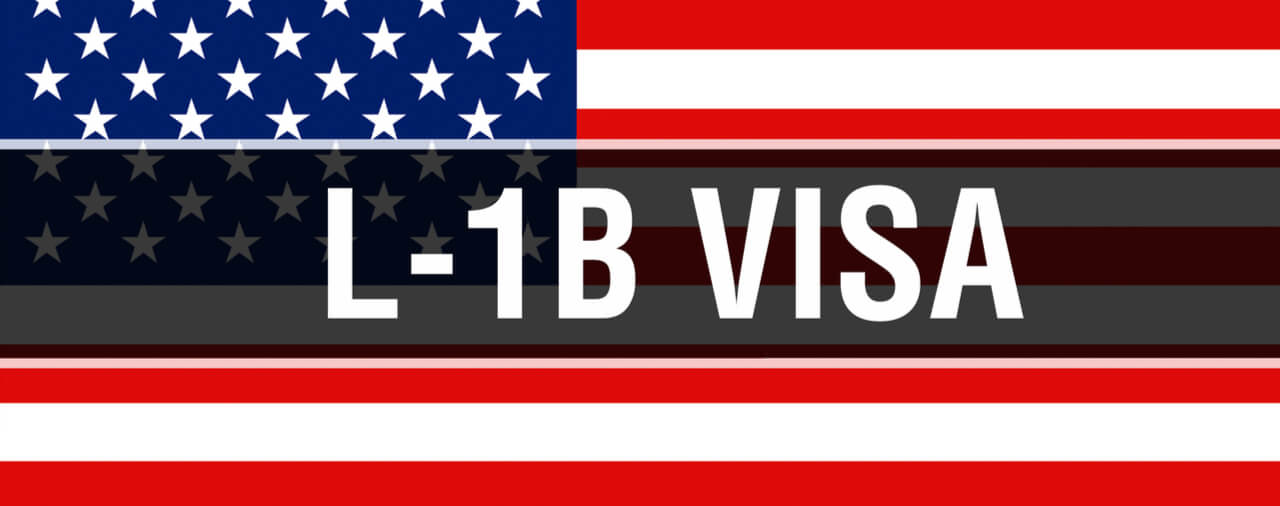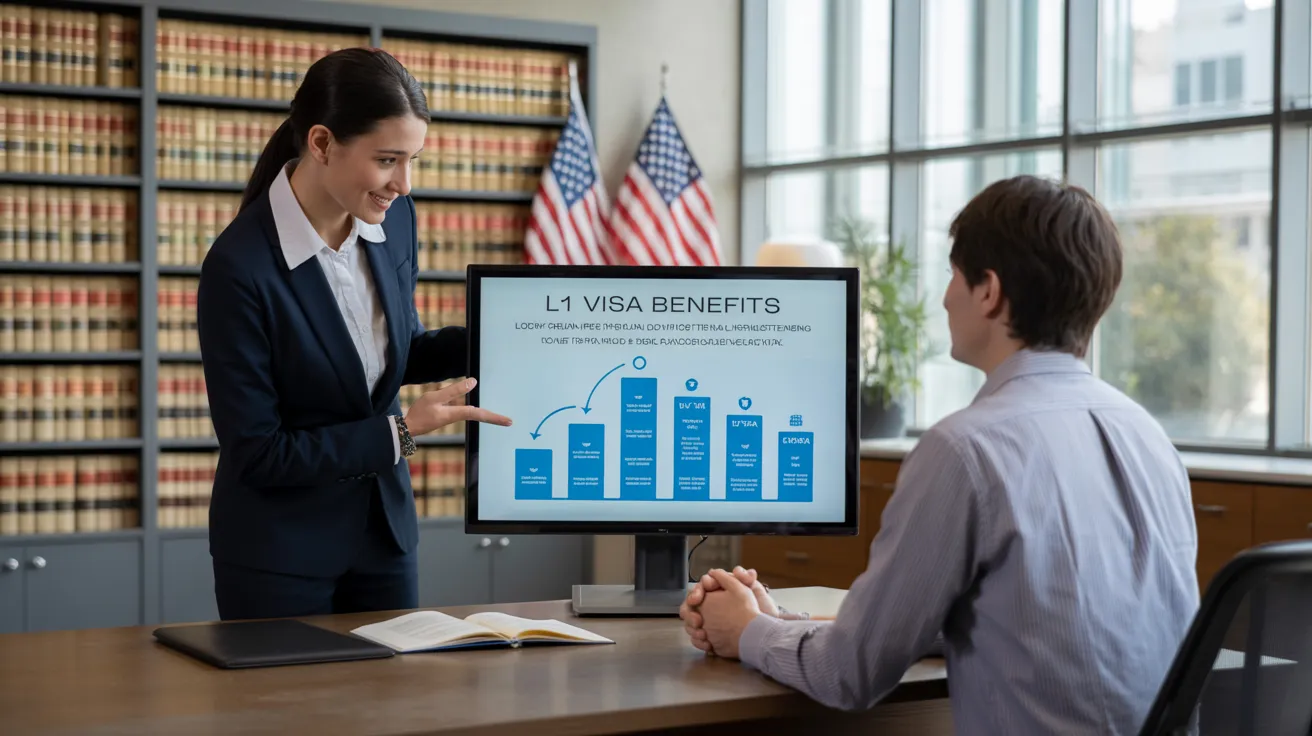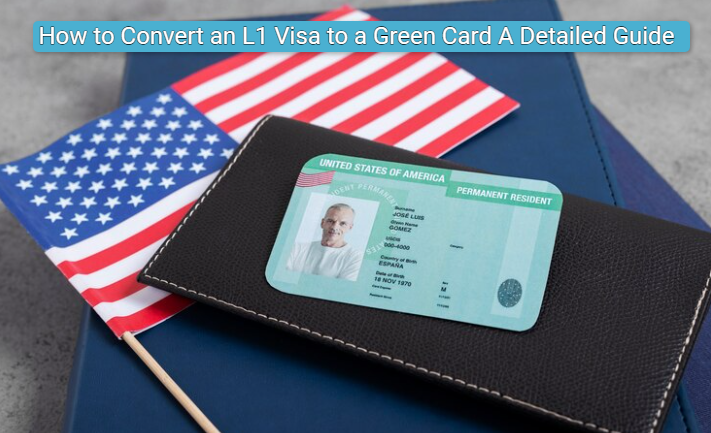Opening Opportunities: A Comprehensive Overview to the L1 Visa Process
The L1 visa procedure presents a vital pathway for international business seeking to move vital workers across boundaries. Understanding the nuances of eligibility criteria, the differences in between L-1A and L-1B visas, and the intricacies of the application process can substantially influence a candidate's success. Maneuvering this complex landscape is not without its obstacles, and cautious interest to documentation and company sponsorship is essential. As we explore the essential elements of this process, the approaches for overcoming prospective obstacles will come to be apparent, exposing exactly how educated preparation can open a world of chances.
Recognizing the L1 Visa
Recognizing the L1 visa requires acknowledging its relevance as a crucial device for multinational business looking for to transfer experienced workers in between worldwide offices. This non-immigrant visa category assists in the activity of executives, supervisors, and specialized knowledge employees to the United States, therefore allowing organizations to maintain functional connection and harness international talent efficiently. The L1 visa is separated right into 2 primary classifications: L-1A for managers and execs, and L-1B for workers having specialized knowledge.The L1 visa offers an essential role in boosting a company's one-upmanship in the worldwide market - L1 Visa Requirements. By allowing business to relocate their vital workers, services can ensure that vital tasks are taken care of by qualified people that are already accustomed to the firm's society and functional processes. This internal transfer device not only fosters understanding sharing yet likewise advertises innovation and collaboration throughout borders.Moreover, the L1 visa is typically preferred for its fairly simple application process compared to various other visa classifications, as it enables for double intent, permitting owners to seek permanent residency while on a short-term copyright. This function makes the L1 visa specifically appealing for both companies and workers, as it improves the pathway for knowledgeable professionals to establish lasting residency in the United States
Eligibility Standards
Eligibility for the L1 visa pivots on a number of key standards that assure both the employee and the employer meet specific credentials. This non-immigrant visa is designed for multinational companies to move staff members from consular services to U.S. counterparts.Firstly, the employer needs to be a certifying company, which includes a moms and dad business, branch, affiliate, or subsidiary of an U.S. service. The business should have been doing service for at least one year both in the U.S. and abroad. This assures that the firm has enough functional stability and a legitimate presence.Secondly, the staff member must hold a managerial, executive, or specialized understanding position. For L1A visas, the candidate needs to demonstrate managerial or executive qualifications, while L1B visas concentrate on specialized knowledge relevant to the organization's items, solutions, or procedures. Furthermore, the employee has to have benefited the international entity for at the very least one continuous year within the last 3 years prior to their application.Lastly, the staff member's role in the U.S. have to align with their previous placement, making certain that their abilities and proficiency are leveraged for the firm's benefit.
Types of L1 Visas
The L1 visa category makes up two key types created to assist in the transfer of workers within international companies: the L1A visa for managers and executives, and the L1B visa for staff members with specialized expertise. Each type offers unique functions and has specific qualification criteria.The L1A visa is tailored for people who hold managerial or executive settings within a firm. This visa enables high-level staff members to transfer to a united state branch, subsidiary, or associate of the exact same company. Candidates for the L1A visa should show that they have actually been used in a managerial or executive ability for at least one continual year within the previous 3 years prior to their application. Furthermore, this visa provides a much longer period of stay, initially approved for three years, with the possibility of expansions for up to seven years.In contrast, the L1B visa is meant for professionals with specialized knowledge pertaining to the company's products, solutions, or processes. To qualify, applicants should verify that their competence is important to the organization and that they have worked for a minimum of one continuous year within the last three years in a function that needed this specialized understanding. The L1B visa is initially provided for 3 years, with extensions available for approximately five years.Both visa kinds are essential for firms looking for to improve their global operations by leveraging competent workers, thereby promoting innovation and efficiency within the united state market.
Application Process
Guiding via the L1 copyright procedure entails several vital steps that should be meticulously followed to guarantee an effective end result. The procedure begins with the united state employer, who must initially establish eligibility by showing a certifying partnership with the foreign entity and verifying that the worker fulfills the details demands for the L1 visa category being sought.Once qualification is validated, the company starts the procedure by filing Type I-129, the Request for a Nonimmigrant Employee, with the United State Citizenship and Migration Solutions (USCIS) This kind should be gone along with by a thorough description of the job tasks to be performed, the business framework of both the U.S. and foreign entities, and the employee's qualifications. It's crucial to validate that all info is exact and complete, as noninclusions or mistakes can cause hold-ups or denials.Upon authorization of the I-129 petition, the next step includes the worker applying for the L1 visa at an U.S. embassy or consular office in their home country. This phase calls for the conclusion of Kind DS-160, the Online Nonimmigrant copyright, and scheduling a meeting. Throughout the interview, the candidate should offer evidence supporting their certifications and the employer's petition.After the visa is granted, the employee can enter the USA to operate in the assigned role. Overall, mindful prep work and adherence to each action of the application process are vital for an effective L1 visa result.
Required Documents

Essential Kinds Required
Maneuvering the L1 Visa process requires cautious focus to the vital forms and documentation necessary for a successful application. The main kind required is the Type I-129, Petition for a Nonimmigrant Employee, which should be completed and sent by the U.S. company. This form lays out the information of the work deal and the credentials of the staff member looking for the L1 Visa.Alongside Type I-129, the candidate will need to total Type I-539 if coming with household participants are likewise getting visas. Additionally, the company needs to give proof of the certifying connection in between the U.S. entity and the foreign entity, often demanding the submission of business papers such as posts of consolidation or financial statements.Moreover, it is vital to include the L Category Supplement to Type I-129, which defines the sort of L Visa being requested-- either L-1A for supervisors and executives or L-1B for staff members with specialized understanding. Lastly, applicants need to guarantee that all kinds are authorized and dated properly, as incomplete submissions can lead to hold-ups or denials. Effectively putting together these important types lays the foundation for a smoother L1 copyright process.

Supporting Evidence Demands
Supporting documentation is important for an effective L1 copyright, as it validates the insurance claims made in the application. Applicants need to offer a variety of papers to show eligibility for the visa, which is categorized into 2 key kinds: proof of the certifying connection between the U.S. and foreign entities and evidence of the candidate's qualifications.To establish the relationship, applicants should submit paperwork such as company business charts, financial statements, and evidence of ownership. These records validate that the international business has a qualifying relationship with the U.S. company, whether as a parent company, subsidiary, branch, or affiliate.For the candidate's qualifications, essential records consist of a thorough work letter from the international company, detailing the applicant's job title, tasks, and period of work. Additionally, academic qualifications, such as degrees and diplomas, need to be provided to show the candidate's experience in the relevant area.
Employer Sponsorship Records

Usual Challenges
Navigating the L1 visa procedure offers a number of usual obstacles that candidates should know. Trick issues usually consist of stringent documents needs, prospective delays in handling times, and the requirement for strict lawful compliance. Recognizing these barriers can assist applicants much better prepare and mitigate dangers during their copyright trip.
Documents Needs
The L1 copyright process typically provides significant difficulties associated with paperwork demands. Applicants must provide extensive paperwork to establish eligibility, which can result in confusion and potential delays. Secret papers consist of evidence of a qualifying relationship between the united state and foreign company, evidence of the applicant's work history, and thorough info regarding the task function in the U.S.One common obstacle is collecting enough evidence to show the nature of L1 Visa the qualifying relationship. Firms commonly have a hard time to present clear business graphes or financial declarations that show the link between the entities. In enhancement, ensuring that letters of assistance from employers precisely reflect the applicant's job duties and credentials is essential, as obscure descriptions can cause denials.Another issue develops from the need for comprehensive job summaries that line up with the L1 visa classifications. Candidates have to articulate not only their current role but additionally their supervisory or customized knowledge responsibilities plainly. This requires a detailed understanding of both the applicant's placement and the regulatory language used in L1 applications.
Processing Dead Time
Experiencing delays in handling times is a common challenge dealt with by L1 visa applicants, often resulting in frustration and unpredictability. Numerous variables add to these hold-ups, including high application quantities, boosted scrutiny of applications, and management backlogs within the united state Citizenship and Migration Solutions (USCIS) Applicants might discover that processing times can vary greatly depending on the solution center managing their application, as each center has its very own workload and efficiency levels. Furthermore, the complexity of the candidate's situation, such as the demand for extensive documentation or explanation, can additionally expand wait times.In some instances, concerns associated with the applicant's existing immigration status or previous visa background might also lead to additional hold-ups, as USCIS may need further review or information. It is necessary for prospects to continue to be positive during this period, preserving open interaction with their companies and lawful reps to resolve any possible concerns promptly.Understanding these processing time challenges can aid L1 visa applicants prepare for feasible hold-ups and alleviate the effect on their change and profession strategies. Patience and persistance are essential virtues in maneuvering this detailed procedure.
Lawful Conformity Issues
Several L1 visa applicants encounter lawful conformity concerns that can complicate their trip toward getting the visa. Comprehending and adhering to the particular laws set by the U.S. Citizenship and Immigration Services (USCIS) is vital. Common challenges include demonstrating the certifying relationship between the international and united state employers, in addition to confirming that the candidate has the requisite specific expertise or supervisory capacity.Additionally, candidates have to give extensive documents describing their job duties, company structure, and monetary viability of the U.S. entity. Insufficient or incorrect paperwork can lead to hold-ups and even rejections. Employers must additionally ensure that they abide with labor regulations, including wage and working condition requirements, which can impact visa eligibility.Another common problem entails maintaining conformity with the regards to the visa once given. Modifications in work condition, work obligations, or firm structure can necessitate changes to the visa, which otherwise attended to immediately can lead to legal difficulties. Because of this, staying notified concerning compliance needs and looking for lawful advise when required is crucial to navigate the complexities of the L1 visa process efficiently.
Tips for Success
Success in the L1 copyright process commonly depends upon careful preparation and focus to information. To improve your opportunities of approval, start by completely understanding the eligibility demands for both the L1A and L1B visa groups. Examine whether your placement at the company certifies as managerial, executive, or specialized knowledge, as this categorization especially influences your application.Next, collect comprehensive paperwork that validates your cases. This consists of organizational charts, comprehensive work summaries, and proof of the business's functional structure. Clear and succinct evidence of the certifying connection between the U.S. entity and the foreign entity is essential. Validate that all documents are organized practically and presented in a specialist way, as this reflects your commitment and severity concerning the application.Engage the services of a skilled migration attorney that concentrates on L1 visas. Their experience can show vital, guiding you with complicated policies and ensuring that all documents abides by present regulations. Furthermore, get ready for the interview by practicing solution to common questions and being ready to review your function and contributions to the company in deepness.
Often Asked Concerns
Can Household Members Go Along With the L1 Visa Holder?
Yes, relative of L1 visa holders, consisting of partners and single kids under 21, can go along with the key visa holder. They may also obtain L2 visas, which allow them to stay in the USA.
The Length Of Time Can I Remain on an L1 Visa?
The L1 visa permits initial stays of approximately three years, with the possibility of expansion. L1A visa owners might stay for a maximum of 7 years, while L1B visa holders can remain for five years.
Can L1 Visa Holders Make An Application For an Environment-friendly Card?
Yes, L1 visa holders can request a copyright. L1 Visa Requirements. They may go after long-term residency through employment-based categories, generally calling for sponsorship from their company, given they satisfy the required certifications and paperwork needs
What Occurs if My L1 copyright Is Refuted?
If your L1 copyright is denied, you might obtain a notice describing the reasons for denial. You can look for to appeal the choice, reapply, or discover different visa choices based upon your situations.
Exist Any Travel Restrictions With an L1 Visa?
An L1 visa typically enables worldwide travel; nevertheless, re-entry to the united state rests upon preserving valid standing. Travelers must guarantee conformity with visa problems to avoid difficulties upon return
Verdict
